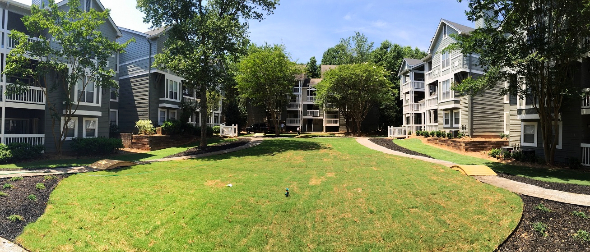
CLASS-B APARTMENT HOMES: AN ATTRACTIVE INVESTMENT
Hollywood – December 1, 2015
WHY THE FOCUS IS SHIFTING AWAY FROM URBAN, CLASS-A PROPERTIES
Over the past several years, the gap in vacancy rates between Class-A and Class-B apartment communities has closed. Both classes of properties have posted 4.9 percent vacancy rates over the past two years. What’s more, experts expect Class-B vacancy rates to continue their decline:
“Class-A vacancy rates will continue to rise, while class-B vacancy should decline as few developers build class-B buildings. Rents should continue to rise, although the rate of growth for class-A rents will be lower than it has been. The rate of growth for class-B rents should stay the same.” —Economist Barbara Byrne Denham, in a National Real Estate Investor report
Less competition for suburban renters
The shift is due, in large part, to overdevelopment of luxury properties in downtown, urban areas. By contrast, suburban properties experience less competition for renters. New development of Class-A properties is much slower in the suburbs than in urban centers, and most developers are not building Class-B properties at all.
National Real Estate Investor writer Bendix Anderson writes:
“That’s because relatively few developers are building in the suburbs, where resistance to development and restrictive zoning laws keep many builders away. The inventory of apartments has grown more quickly in central business districts than in the suburbs since 2007.”
Given that environment, Class-B suburban properties have the opportunity to tap into a larger demographic to fill vacant apartments. Luxury, Class-A properties reach a much narrower target group. While Class-A properties can often sustain more frequent – and steep – rent increases, those properties are also experiencing higher vacancy rates. Anderson goes on:
“Other data firms show Class-B communities posting better fundamentals than class-A properties, with an average Class-B vacancy rate that fell from a high of 8.1 percent in 2010 to just 3.2 percent in the second quarter of 2015, according to Reis. That’s far below the average vacancy rate of 5.7 percent for Class-A apartments in the second quarter.”

Rents and renewals on the rise
Class-B properties in suburban areas have also posted steady rent increases of approximately 2 percent each year.
Recent reports show that both new leases and renewal leases are posting rent increases – 7.8 percent and 5 percent, respectively, nationwide. In addition, the lease renewal conversion rate hit a 10-year high earlier this year, in spite of new apartment development/availability, according to a RealPage report. Renters are choosing to stay in their current rental properties. Renewal rates continued an upward trend through the summer, according to RealPage data.
Quality suburbs on par with investment performance of urban centers
In the spring of 2015, Property Management Insider analyzed the data for the 88 percent of apartments located in suburban areas and identified what it called “good suburbs.” Those good suburbs are defined as being located in healthy economic metro areas with “more jobs, higher incomes, higher home prices, more amenities and proximity to major highways or rail stations” and they often “perform in line with [central business districts] CBDs.”
That PMI article goes on to highlight diminishing investment returns in CBDs and urban areas:
“Apartment income returns in CBDs have recently weakened due to an unprecedented supply wave hitting downtown submarkets. Halfway through the 2010s decade, apartment development in CBDs has totaled nearly 250,000 units. That’s already more than was completed in the entirety of any decade since at least the 1940s…
…Our view is that over the next few years, ‘good suburbs’ will outperform CBDs with better rent growth due to less supply pressure and equally strong demand tailwinds.”
The article notes that resident turnover is lower in suburban areas, as well, which runs counter to traditional assumptions on the issue. When renters like a suburban area, they stay.
Final thoughts
PointOne Holdings is encouraged by this data and the overall health of the suburban multifamily market. We invest in suburban properties that show a strong potential for adding value, in the form of renovations and added amenities. We focus on areas supported by strong economic factors, including job growth, access to transportation and more.
